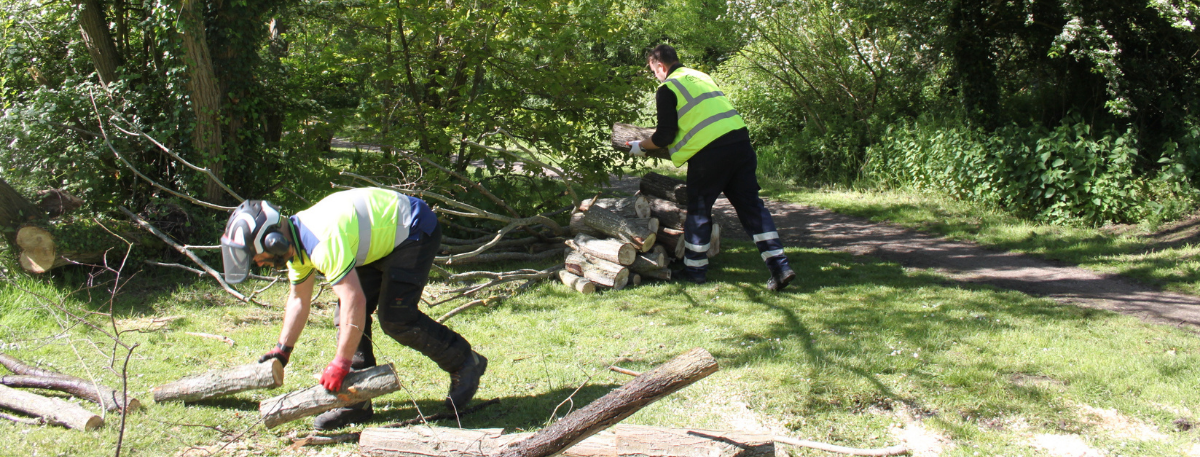Tree felling in Victoria Park – what we are doing and why
Published: 24/11/2021
We understand it can be upsetting to see trees removed and we do not take out trees if it can be avoided but sometimes their removal is a necessary part of landscape management. Victoria Park and Watercress Fields will lose a number of trees over this winter but they have all either been identified as dead or dangerous, or are being thinned out as a response to public consultation.
There are a number of dead or dying Ash trees through the park which need removing, as well as some self-seeded evergreens which have grown at unsafe angles and need to be taken out. The southern bank of the Stour, as it runs through the park, is much more closely managed than the northern bank where the flora is allowed to grow as it wants without causing a risk to park users. By keeping the southern bank under closer control not only does this open up views of the river, but it also reveals sites of special historical significance including droving routes and physical remnants of Fortress Ashford from World War II. Furthermore, by improving sightlines along the main footpath and cycle path, which follows the course of the Stour, we are acting on concerns for personal safety for anyone who may need to travel through the park alone but not feel safe doing so.
We have actually taken delivery of 30 large new trees which are being planted around the park. These include a new avenue of Limes and a number of native Oaks. In addition, the park is supporting the Queen’s Canopy jubilee project which will see over 1,500 new saplings planted in the park.
The project is also creating an entirely new wetland habitat, putting structures in place to halt the erosion of the banks along the river Stour, and supporting KSCP in their efforts to reintroduce more natural meanders and flow to the river through the park. It’s our ambition to improve the value of the park for local wildlife including for rare and protected species such as otters, white-clawed crayfish, water voles, and grass snakes.






